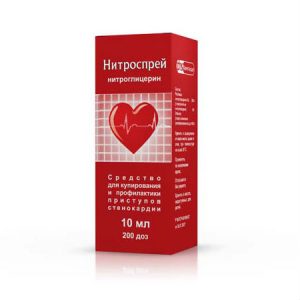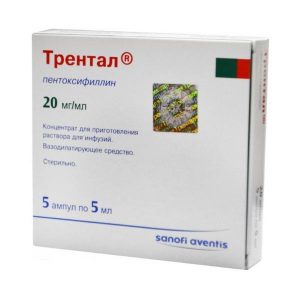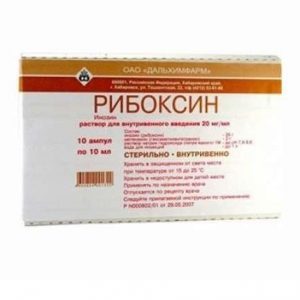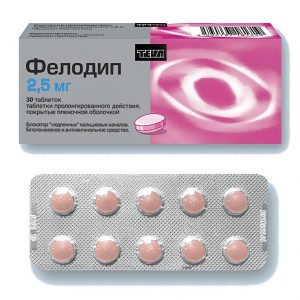Description
Packaging
100 pcs
Pharmacological action
LOPIREL is an antiplatelet drug, a specific and active inhibitor of platelet aggregation. It has a coronary dilating effect. Selectively reduces the binding of ADP to platelet receptors and the activation of GPI Ib / IIIa receptors by ADP, thereby reducing platelet aggregation. Reduces platelet aggregation caused by other agonists, preventing their activation by released ADP, does not affect the activity of PDE. Irreversibly binds to platelet ADP receptors, which remain immune to ADP stimulation throughout the life cycle (about 7 days).
Inhibition of platelet aggregation is observed 2 hours after ingestion (40% inhibition) of an initial dose of 400 mg. The maximum effect (60% inhibition of aggregation) develops after 4-7 days of constant intake at a dose of 50-100 mg / day. The antiplatelet effect lasts the entire period of platelet life (7-10 days).
In the presence of an atherosclerotic lesion of the vessel, it prevents the development of atherothrombosis regardless of the localization of the vascular process (cerebrovascular, cardiovascular or peripheral lesions).
Indications
Prevention of atherothrombosis:
– in patients who have had myocardial infarction, ischemic stroke, or with a diagnosed peripheral artery disease
– in patients with acute coronary syndrome without ST segment elevation (unstable cardiac angina pectoris or infarction) in combination with acetylsalicylic acid, including patients who have had stenting with percutaneous coronary intervention
– in patients with acute coronary syndrome with ST segment elevation (acute myocardial infarction) in combination with acetylsalicylic acid receiving medical treatment with the possible use of thrombolyte.
Contraindications
– severe hepatic insufficiency
– hemorrhagic syndrome
– acute bleeding (including intracranial hemorrhage) and diseases predisposing to its development (peptic ulcer, duodenal ulcer, non-tuberculous ulcer, tuberculosis, pulmonary hyperfibrinolysis)
– pregnancy
– lactation (breastfeeding)
– neonatal period
– age under 18 years (efficacy and safety not established)
– not tolerated galactose bridge, lactase deficiency or malabsorption of glucose-galactose (since lactose is part of the drug)
– hypersensitivity to the drug components.
Use during pregnancy and lactation
The drug Lopirel is contraindicated in pregnancy and lactation (breastfeeding).
Special instructions
In patients with acute myocardial infarction with an increase in the ST segment, clopidogrel treatment should not be started within the first few days after myocardial infarction.
Due to the lack of clinical data, clopidogrel is not recommended for acute ischemic stroke (less than 7 days).
If bleeding develops during treatment with the drug, a clinical blood test (APTT, platelet count, platelet functional activity tests) and liver functional activity should be performed immediately.
Like other antithrombotic drugs, clopidogrel should be used with caution in patients with an increased risk of bleeding (especially gastrointestinal and intraocular) due to trauma, surgery or pathological conditions, as well as in the case of combined use of clopidogrel with acetylsalicylic acid, NSAIDs, heparin, IIb / IIIa glycoprotein inhibitors or thrombolytics .
Severe cases of bleeding have been reported in patients taking clopidogrel concurrently with acetylsalicylic acid or with acetylsalicylic acid and heparin.
Clopidogrel increases bleeding time, so patients should be warned that since it takes a long time to stop bleeding that occurs during the use of the drug (both as monotherapy and in combination with acetylsalicylic acid), it is necessary to inform the doctor about each case of bleeding. Patients should also inform the doctor and dentist about taking the drug in case of an upcoming surgical intervention or if the doctor prescribes a new drug for the patient.
In case of surgical interventions, if an antiplatelet effect is undesirable, the course of treatment with clopidogrel should be discontinued 7 days before surgery.
Careful monitoring of the patient’s condition is necessary to detect signs of bleeding, including occult bleeding, especially during the first weeks of treatment and / or after invasive cardiac procedures or surgery.
Effect on the ability to drive vehicles and control mechanisms
The drug Lopirel does not affect the ability to drive vehicles and does not reduce the rate of psychomotor reactions.
Composition
1 tablet contains:
Active ingredient: clopidogrel hydrosulfate 97.87 mg, corresponding to 75 mg of clopidogrel base.
Excipients: lactose, microcrystalline cellulose, crospovidone (type A), glyceryl dibehenate, talc, Opadray II 85 G34669 pink (polyvinyl alcohol, talc, titanium dioxide (E171), macrogol 3350, lecithin (iron oxide, red oxide (E322), E172)).
Dosage and administration of
The drug is taken orally, regardless of food intake.
For patients who have had a myocardial infarction, ischemic stroke, or with peripheral artery disease, the drug is prescribed 75 mg 1 time / day. Treatment should be started from the first days to 35 days in patients after myocardial infarction and from 7 days to 6 months in patients after ischemic stroke.
In acute coronary syndrome without ST segment elevation (unstable angina pectoris, myocardial infarction without Q wave on ECG), including patients who have had stenting with percutaneous coronary intervention, treatment with Lopirel should be started with a single loading dose of 300 mg, and then continue at a dose of 75 mg 1 time / day (in combination with acetylsalicylic acid). Since the use of acetylsalicylic acid in high doses is associated with an increased risk of bleeding, the recommended dose of acetylsalicylic acid for this indication does not exceed 100 mg. The maximum beneficial effect is observed by 3 months of treatment. The course of treatment is up to 1 year.in combination with acetylsalicylic acid and thrombolytics (or without thrombolytics). Combination therapy is started as soon as possible after the onset of symptoms and continues for at least 4 weeks. In patients older than 75 years of age, treatment with Lopirel should be started without taking a loading dose of
Side effects
Determination of the frequency of adverse reactions: often (> 1/100, 1/1000, 1/10 000, from the central nervous system: sometimes – headache, dizziness, paresthesia is very rare – confusion, hallucinations, violation of taste sensations.
From the digestive system: often – dyspepsia, abdominal pain, diarrhea sometimes – nausea, gastritis, flatulence, constipation, vomiting, stomach and duodenal ulcer very rarely – colitis (including ulcerative or lymphocytic), pancreatitis.
From the hepatobiliary system: very rarely – hepatitis, increased activity of hepatic transaminases.
From the hemopoietic system: sometimes – leukopenia, a decrease in the number of neutrophilic and eosinophilic granulocytes, a decrease in the number of platelets is very rare – severe thrombocytopenia (platelet count? 30? 109 / l), granulocytopenia, agranulocytosis, anemia and aplastic anemia / pancy.
From the blood coagulation system: sometimes – an increase in bleeding time is very rare – thrombotic thrombocytopenic purpura (1 case per 200,000 patients) often – bleeding of various localization and intensity. Most cases of bleeding were noted during the 1st month of treatment (especially intracranial, gastrointestinal and retroperitoneal bleeding), severe cases of skin bleeding (purpura), hemorrhages in the joints and soft tissues (hemarthrosis, hematoma), eye bleeding (conjunctival, ocular, retinal ), nosebleeds, from the respiratory tract (hemoptysis, pulmonary hemorrhage), hematuria and bleeding from the surgical wound.
Dermatological reactions: sometimes – rash and itching very rarely – bullous rash (erythema multiforme), erythematous rash, lichen planus.
Allergic reactions: very rarely – urticaria, anaphylactoid reactions.
From the cardiovascular system: very rarely – vasculitis, arterial hypotension.
From the respiratory system: very rarely – bronchospasm.
From the musculoskeletal system: very rarely – arthralgia, arthritis.
From the urinary system: very rarely – glomerulonephritis, an increase in serum creatinine.
Other: very rare – fever.
Drug interaction
With the simultaneous use of clopidogrel with warfarin, an increase in bleeding intensity is possible (this combination is not recommended).
Acetylsalicylic acid does not change the inhibitory effect of clopidogrel on ADP-induced platelet aggregation, but clopidogrel potentiates the effect of acetylsalicylic acid on platelet aggregation induced by collagen. However, the simultaneous use of acetylsalicylic acid at a dose of 500 mg 2 times / day did not cause any significant increase in bleeding time, prolonged due to clopidogrel. The safety of long-term simultaneous use of acetylsalicylic acid and clopidogrel has not been established, however, clopidogrel and acetylsalicylic acid can be used simultaneously for up to one year.
According to a clinical study conducted on healthy volunteers, the simultaneous use of clopidogrel and heparin does not require dose adjustment of the latter and does not affect the antiplatelet effect of clopidogrel, however, the safety of this combination has not yet been established (caution is required with this combination).
The safety of the simultaneous use of clopidogrel with thrombolytics has not yet been established (caution is required with this combination).
In a clinical study conducted with healthy volunteers, the combined use of clopidogrel and naproxen showed an increase in latent gastrointestinal bleeding. However, due to the lack of clinical studies of the drug s interaction with other NSAIDs, it is currently not established Is there an increased risk of gastrointestinal bleeding when using other drugs in this group (with a combination of clopidogrel and NSAIDs, caution is required).
No clinically significant pharmacodynamic interaction with clopidogrel combined with atenolol and / or nifedipine has been identified.
The pharmacodynamic activity of Lopirel remains virtually unchanged while it is used with phenobarbital, cimetidine, or estrogens.
The pharmacokinetic properties of digoxin or theophylline do not change when combined with clopidogrel.
Antacids do not alter clopidogrel absorption.
Data from studies with human liver microsomes suggest that clopidogrel can inhibit the activity of the CYP2C9 isoenzyme. As a result of this, it is possible to increase plasma concentrations of certain drugs, such as phenytoin and tolbutamide, since they are metabolized by CYP2C9. The results of the CAPRIE study indicate the safety of phenytoin and tolbutamide in combination with clopidogrel.
Overdose
Symptoms: Increased bleeding time.
Treatment: Clopidogrel effect may be eliminated by platelet transfusion if rapid correction of increased bleeding time is required. There is no specific antidote.
Storage conditions
At a temperature not exceeding 30 ° C.
shelf life
3 years
Deystvuyushtee substance
Clopidogrel
Terms and conditions
prescription
tablet dosage form of tablets
Actavis Ltd, Iceland




